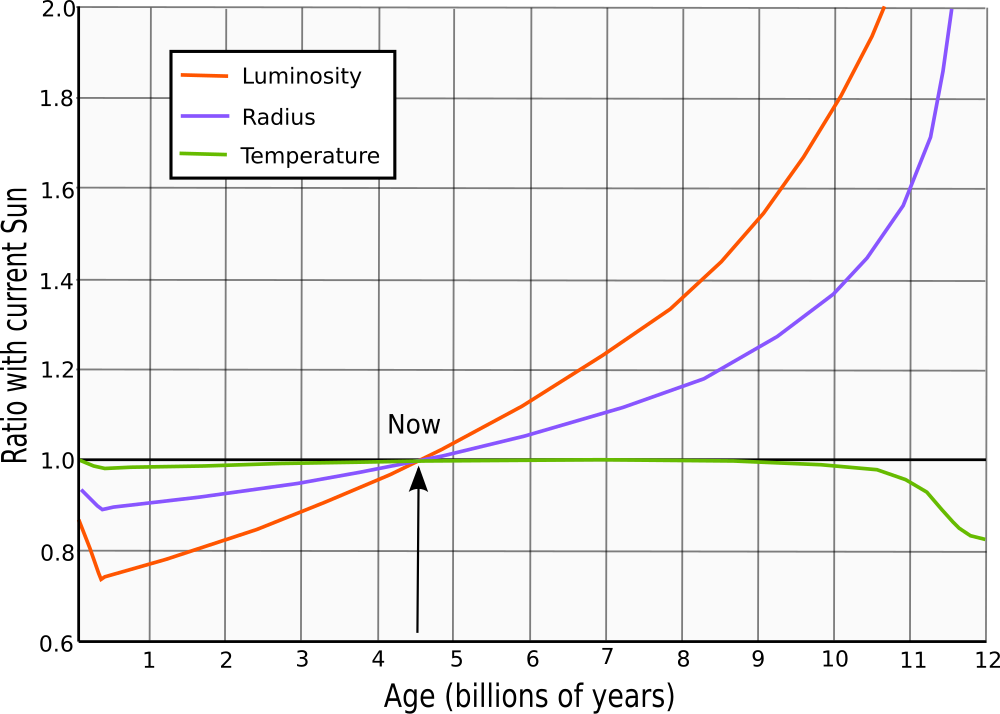
Caption: The plot shows the evolution of the Sun's luminosity, radius, and effective temperature with time. Thus, the illustrates key aspects of the Sun's life phases.
Features:
- The quantities are normalized to
present-day
values for the Sun.
- The time-zero
is the zero-age main sequence (ZAMS) phase
and past ∼ 10 Gyr
the Sun is evolving to
its red giant phase.
- The Sun's red giant phase
is estimated to begin in about 5.4 Gyr
(see Wikipedia: Sun:
After core hydrogen exhaustion).
The plot is NOT quite consistent with the estimate, but exact consistency between different astro sources is hard to find. Calculations of the model quantities vary somewhat between sources. This is a consequence of uncertainties in the modeling.
- As you can see in the plot,
soon after formation when
the Sun just arrived on the
main sequence,
it was probably ∼ 30 % less bright than now.
About 3.5 Gyr from now, the Sun will probably be ∼ 30 % brighter than now.
- The
secular increase
(i.e., long-term increase)
in the Sun's
luminosity
(i.e., the solar brightening)
is a purely theoretical prediction since it is unobservably slow over
human history.
But it is as certain as pure
theory can be since
we understand main-sequence stars
very well in their main behaviors.
The solar brightening is a pretty modest change for the Sun for next 5 Gyr or so.
- But alas, the solar brightening
spells the doom of
complex life
on Earth and then later
all life
on Earth
(see
Wikipedia: Future of Earth:
Climate Impact;
Wikipedia: Future of Earth:
Loss of oceans).
The course of events which will doom life first is NOT certain. Various scenarios are possible.
However, liquid water will drastically diminish for many reasons and life might become extinct everywhere for that reason by ∼ 3 gigayears after the present (Wikipedia: Future of Earth: Loss of oceans). Life as we know it requires liquid water.
By the same time, steady release of carbon dioxide (CO_2) by volcanic outgassing might give the Earth a carbon dioxide (CO_2) atmosphere leading to a runaway greenhouse effect which will make the Earth too hot for liquid water in any case and which is what happened to Venus (Wikipedia: Runaway greenhouse effect: Venus).
But we don't have to worry about these melancholy stories since they occur on a time scale far longer than human history. We only contemplate them philosophically.
Local file: local link: sun_evolution.html.
File: Sun file: sun_evolution.html.